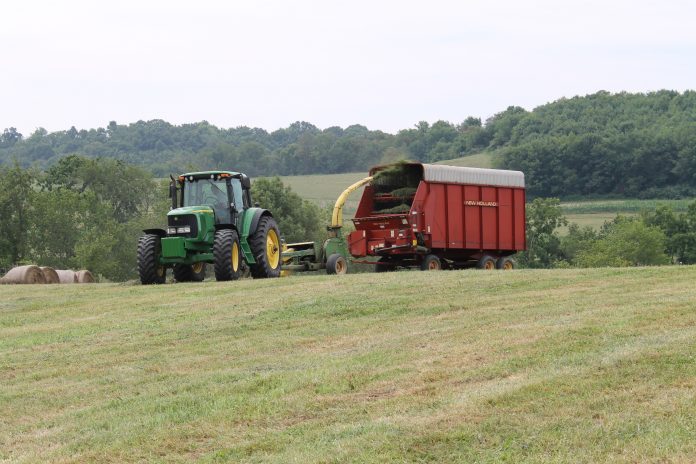MILWAUKEE, Wis. — Silage testing is a fundamental tool for the farm to continuously evaluate quality and adjust to feed the best-possible forages.
Jim Henry, western dairy development manager for Mycogen Seeds, offers these harvest and silage testing best practices as producers near harvest and prepare to store and feed a new silage crop:
1Pull a quality sample
Corn silage testing starts with a high-quality sample. Producers should remove at least a feeding, or better yet, a day’s worth of silage from the exposed face.
Next reach deep into the pile or bag with a cup to scoop a representative sample of silage, placing the silage in a clean, dry bucket. Blend the silage in the bucket and dump it onto a clean, dry and smooth surface for subdividing. Mix thoroughly and cut the silage sample in half with a rigid instrument, like a clipboard.
Discard half and remix the remaining half, following the same procedure until the desired amount of silage for sending to the lab for analysis is obtained.
Place the final remaining sample in a sturdy, sealable plastic bag, squeeze out as much air as possible and seal the bag.
Henry recommends sending two samples for analysis and averaging the results to minimize sampling error.
2Work with a trusted lab
There are many labs to choose from when submitting and processing corn silage samples. Be sure to use the same lab for consistency in testing practices, types and procedures.
Tell your lab the hybrids you grew. Testing results may vary slightly based on what type of corn silage producers grow. Certain tests may yield more accurate results for particular hybrids.
Mycogen Seeds recommends using a lab that practices in-vitro testing (wet chemistry) instead of near infrared (NIR) spectroscopy for measuring fiber digestibility. According to Henry, in-vitro testing provides the most accurate values through a direct analysis of individual nutrients.
3Test regularly
Corn silage should be tested at harvest and again at least monthly, after opening. If producers expect there to be variation, testing more often is recommended.
Moisture content of the silage should be checked on the farm at least weekly or when rain or snow events occur.
Throughout the year, producers should analyze samples and adjust their ration to fit the composition of their corn silage to achieve optimum results from the herd.
4Consult a local expert
Producers should meet with their local nutritionist regularly to pull quality samples, evaluate results and adjust their ration.










